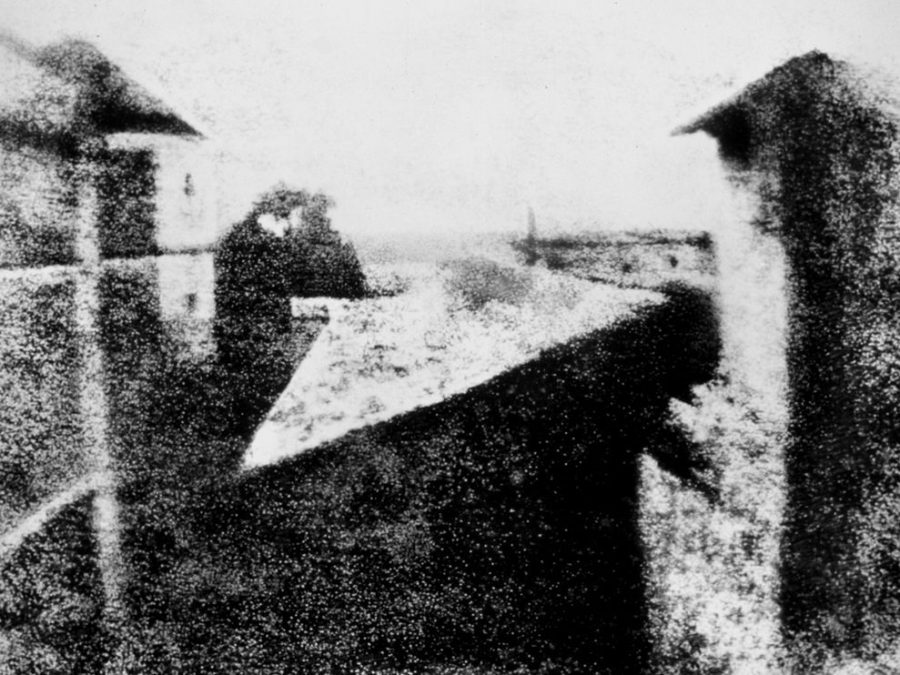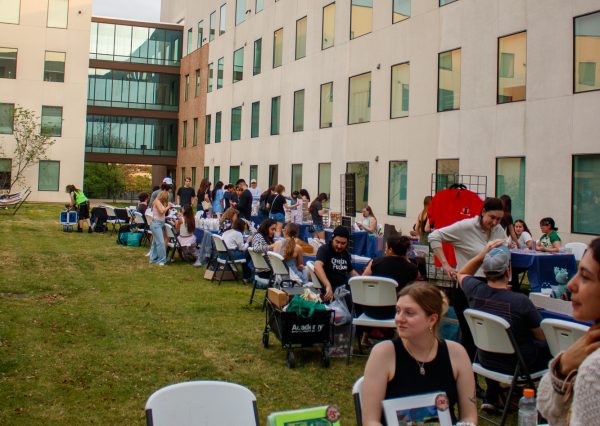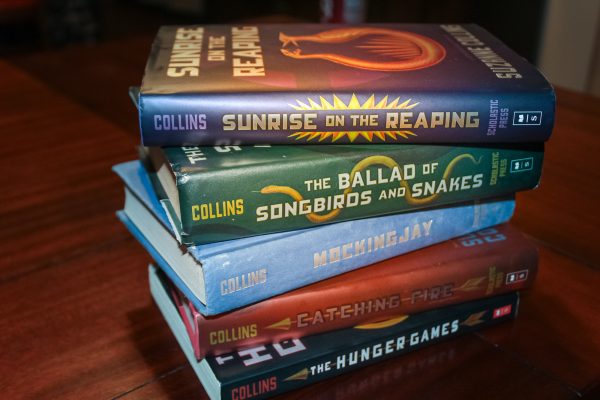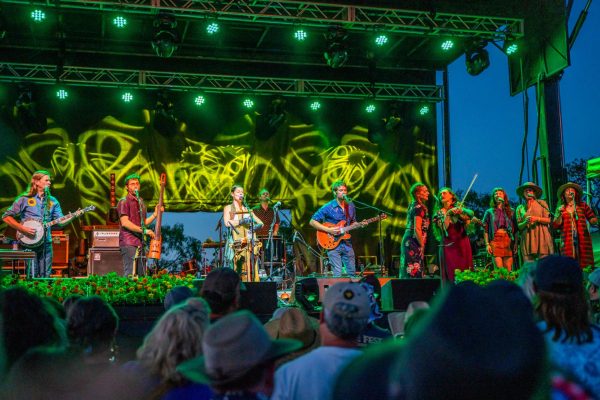UT’s Harry Ransom Center houses first photograph, offers view into history of photography
In this age of smartphones, photography is something that many of us take for granted. We take a Snapchat without a second thought. We capture everything from selfies to photos of our food, friends and travels. We share these photos on Facebook, Twitter and Instagram for people all over the world to see; but photography wasn’t always as simple as it is today.
Stopping by the Harry Ransom Center at UT — an archive, library and museum that houses the first photograph — can provide a history lesson on photography and a good chance to reflect on the modern luxuries we often take for granted.
Photography as we know it today has really only been around since the late 1800s and early 1900s, but the history of the medium goes back much further than that.
The first known predecessor of photography was the “camera obscura,” a device in which a dark chamber or room with a very small hole in one wall projects images of objects outside the room on the opposite wall. Written documentation of camera obscuras goes back as far as the ancient Greeks and Chinese over 2,000 years ago.
Although artists throughout the centuries have used camera obscuras to trace images, this method relied heavily on the artist’s drawing skills. In order to produce images completely mechanically, scientists had to figure out how to use light and chemicals to transfer the image from the camera obscura onto another surface.
There were many early attempts to reproduce photographic images. One of the most important was made in 1727 by a German professor of anatomy, Johann Heinrich Schulze, who proved that silver salts were darkened by light and not by heat. He proved this by using sunlight to produce words and images onto the silver salts but made no attempt to apply this discovery to creating permanent photography.
Jump forward about a thousand years to 1826 and Joseph Nicéphore Niépce, an inventor living in the Burgundy region of France, made a huge leap toward creating photography as we know it today. Using a camera obscura, just like the ones that the ancients had used centuries before him, Niépce captured an image of the upstairs view of his apartment.
Niépce used a heliotype method to produce his image. In the heliotype process, a metal plate made of pewter is coated with a light-sensitive solution of bitumen of Judea — a type of asphalt — and lavender oil and exposed to the light from the image of the camera obscura. After an exposure time of about eight hours, the solution under the light areas of the image harden, while those under the dark areas remain soft, able to be washed away.
The image that Niépce created on a pewter plate in his apartment in 1826 still exists today and is on view at the Harry Ransom Center at the University of Texas at Austin.
The photograph doesn’t look like anything that we would consider a stunning image today; due to its chemical and physical qualities, it is slightly difficult to make out the image.
However if you look closely you can see the outlines of the buildings, courtyard and trees outside Niépce’s window.
The Harry Ransom Center is located at the University of Texas at Austin at 300 West 21st Street. Admission is free.







